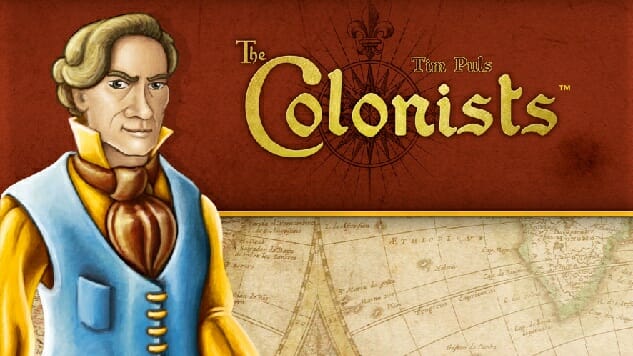The Colonists Will Colonize Your Free Time

The Colonists bills itself as “an epic game,” and certainly delivers on that promise in size, scope and even sheer weight (the box is around 7 pounds). It’s a very clever, well-designed game that almost invites us to mock it for its ambition, and perhaps a little pretention too. This is the game for people who think Le Havre doesn’t take enough setup time, for people who really wish someone had merged Civilization with Agricola, for people who saw Cones of Dunshire on Parks & Recreation and really did want to be the Ledgerman, because if there’s one constant theme of gameplay in The Colonists, it is that good accounting is absolutely essential.
The game really has almost every mechanic you might find in a low-luck game. You’re building a colony (or city), you’re placing workers, you’re collecting resources, you’re playing cards to improve your little nation-state. It has approximately 2×108 pieces. And it presents you with an enormous array of possible decisions that could easily lead to paralysis by analysis if you’re so inclined.
The Colonists takes place over one to four eras, each comprising five years, with players taking two turns per year and taking three actions per turn, so that’s 30 actions per era and possibly 120 for a full game. For nearly every game I review here, I play the full game through at least once before writing anything, but in this case, for reasons that should be apparent, that didn’t happen: I played one two-player game over two eras, which took two solid hours of gameplay plus the half hour of setup. While familiarity with the rules would probably have shaved a little bit off the playing time, as the game moved along the number of potential actions for each turn grew, which meant we spent more time thinking and less time doing (or talking to each other, because between turns we were each running through mammoth decision trees in our heads).
Each player starts the game with a mostly empty colony board that has a couple of Farm tiles, each of which has one green worker who can be used to activate certain other buildings; storage space for three resources; and three tools, used to construct just about everything in the game. You’ll need to build more storage spaces, which are actually a huge requirement in the game and can be upgraded in later eras to hold more stuff. (I couldn’t help but think of the Monty Python sketch “Storage Jars” while playing.)
There’s also a central board of hex tiles that will change each game, with two Market tiles that confer ever-changing benefits to players who land there and to which a player can move his/her marker (called a “steward”) from anywhere on the board. Otherwise the player must move around the board of hexes one at a time, and on each hex take the associated action, usually one of three things: acquiring resources, converting one resource type into another (wood into planks, clay into bricks, clay and ore into tools), or adding a building to his/her own board. Each building has its own cost in resources, so many turns will have you taking one or two actions to get resources while taking another action to build something.
-

-

-

-

-

-

-

-

-

-

-

-

-

-

-

-

-

-

-

-

-

-

-

-

-

-

-

-

-

-

-

-

-

-

-

-

-

-

-

-








































